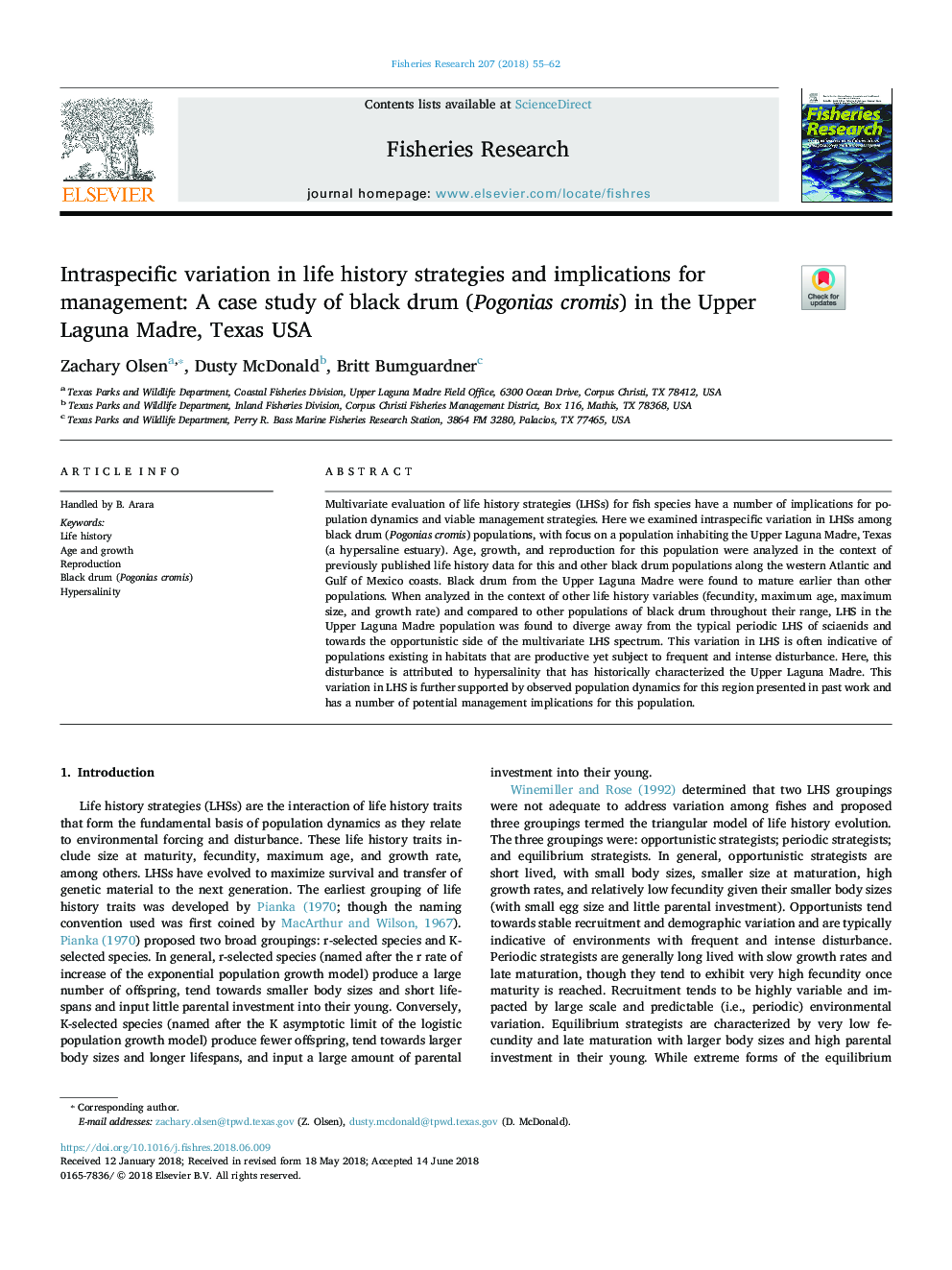| Article ID | Journal | Published Year | Pages | File Type |
|---|---|---|---|---|
| 8885228 | Fisheries Research | 2018 | 8 Pages |
Abstract
Multivariate evaluation of life history strategies (LHSs) for fish species have a number of implications for population dynamics and viable management strategies. Here we examined intraspecific variation in LHSs among black drum (Pogonias cromis) populations, with focus on a population inhabiting the Upper Laguna Madre, Texas (a hypersaline estuary). Age, growth, and reproduction for this population were analyzed in the context of previously published life history data for this and other black drum populations along the western Atlantic and Gulf of Mexico coasts. Black drum from the Upper Laguna Madre were found to mature earlier than other populations. When analyzed in the context of other life history variables (fecundity, maximum age, maximum size, and growth rate) and compared to other populations of black drum throughout their range, LHS in the Upper Laguna Madre population was found to diverge away from the typical periodic LHS of sciaenids and towards the opportunistic side of the multivariate LHS spectrum. This variation in LHS is often indicative of populations existing in habitats that are productive yet subject to frequent and intense disturbance. Here, this disturbance is attributed to hypersalinity that has historically characterized the Upper Laguna Madre. This variation in LHS is further supported by observed population dynamics for this region presented in past work and has a number of potential management implications for this population.
Related Topics
Life Sciences
Agricultural and Biological Sciences
Aquatic Science
Authors
Zachary Olsen, Dusty McDonald, Britt Bumguardner,
